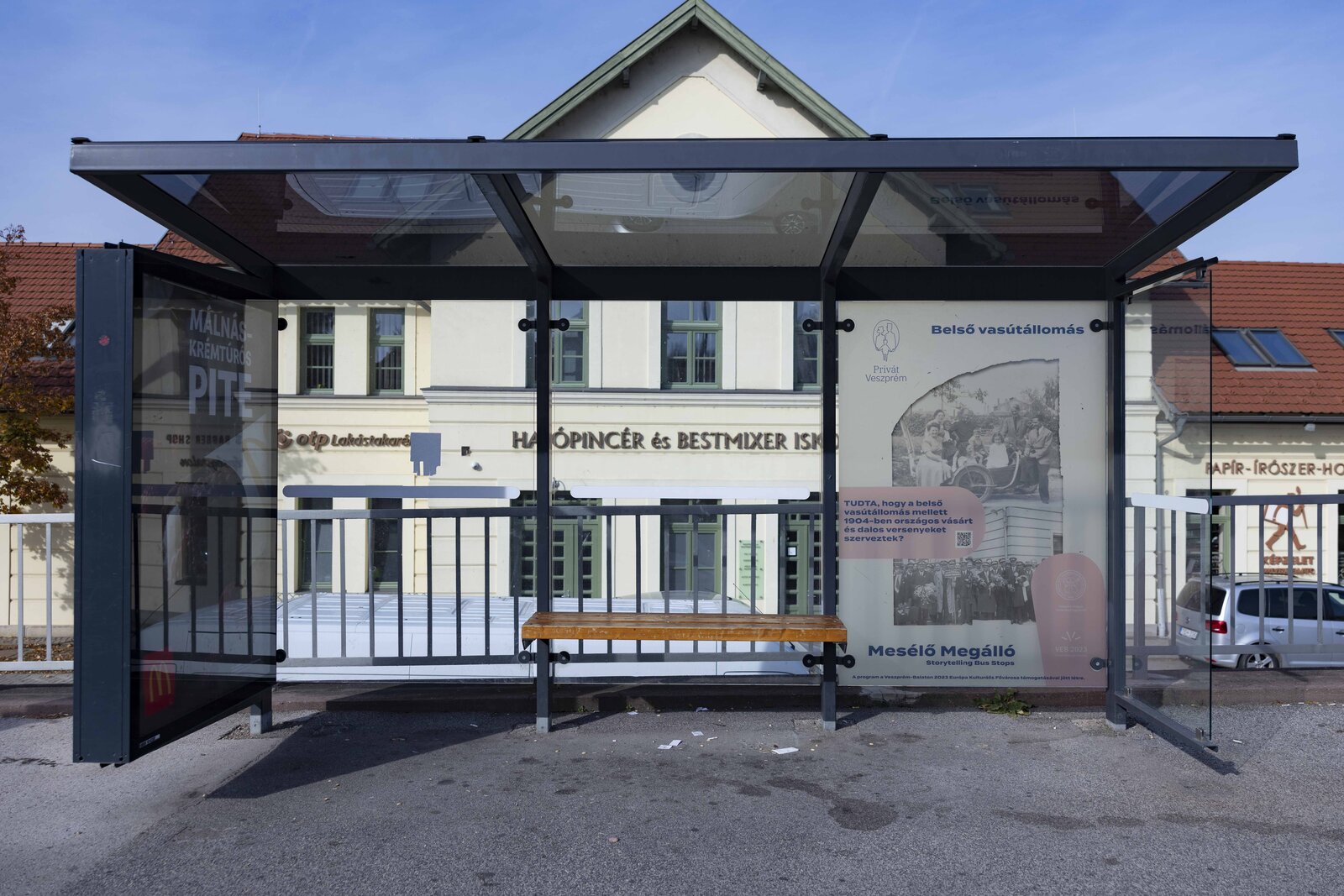Storytelling Bus Stops - Internal railway station


In 1970, the Economic Committee decided that a concrete house factory could be built in Veszprém. Veszprém County State Construction Company (VÁÉV), which was the ninth housing factory in Hungary, inaugurated its self-financed project on 9th March 1975. Although the housing factory in Veszprém used Soviet technology, it was considered by experts to be the most modern of its kind after Larsen Nielsen housing factory in Kecskemét. From 1976, the company built nearly 30,000 homes across the country and beyond (e.g. in Káposztásmegyer, Békásmegyer, Libya and Iraq). They also built nurseries, schools, a community centre, a cinema and a new wing of the county hospital, yet they were the first major construction company to be liquidated.
The company embarked on a major investment in Iraq in the early 1980s, under direct government orders, which ended with losses of hundreds of millions of dollars. Although part of this was taken over by the government budget, it was not enough to save the company. In the three years between 1982-84, their debts reached one billion forints. The people of Veszprém hoped for renewed state intervention, but to no avail, just as the planned merger with the Alba Régia Construction Company of Székesfehérvár was cancelled. In the meantime, the state sold the technology of the housing factory for 240 million in 1986, a time of great financial shortage. Liquidation proceedings began on 5th March 1987. The managers of the proceedings had a difficult task: they had to deal with the destinies of 2,500 workers, find a contractor for the investments they had begun and a buyer for the production equipment and buildings.
The liquidation of the company was completed in 1989 without leaving any debts behind, and it had the capacity and the funds to carry out warranty and guarantee work. However, by then the company was no longer in business and the money had gone into the pockets of the State.

